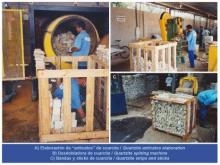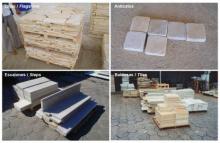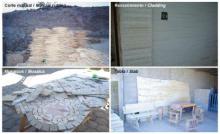Coral Stone
The Spaniards who reached the New World around end of the XV century or towards the beginning of the XVI century, guided by Christopher Columbus, used for the buildings of their new settlements and the main social buildings, a limestone denominated Coral Stone, which, even today, can be found in abundance in the Dominican Republic and Colombia.
This stone was formed in the riverbeds in the period Pleistocene, starting from the fossils, corals and other marine animals, thus the majority of the coral limestone has originated in the reefs.






